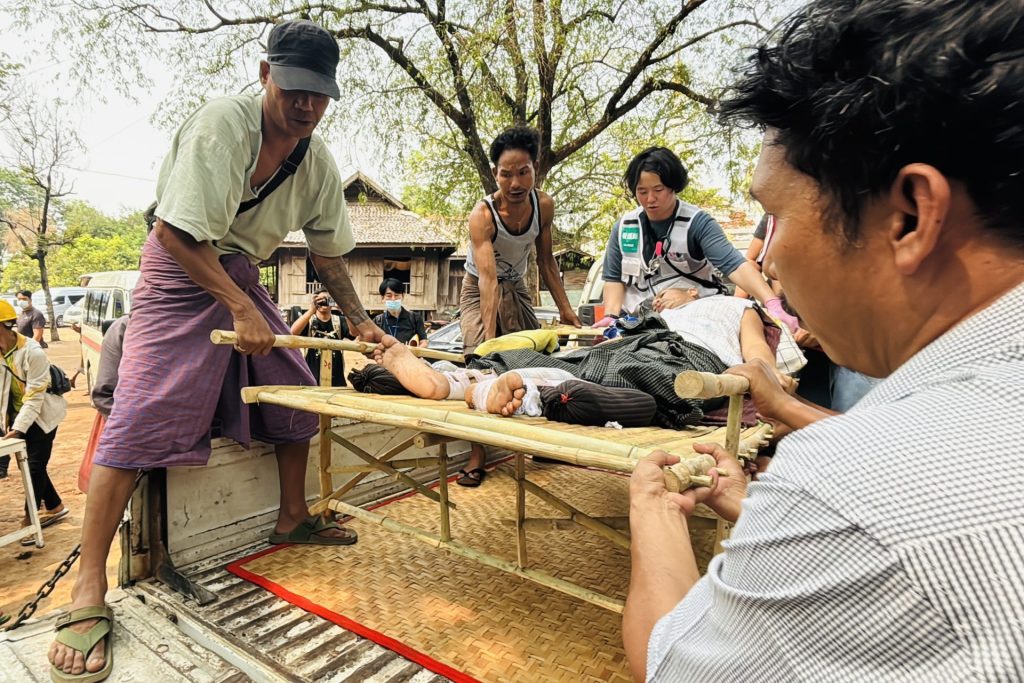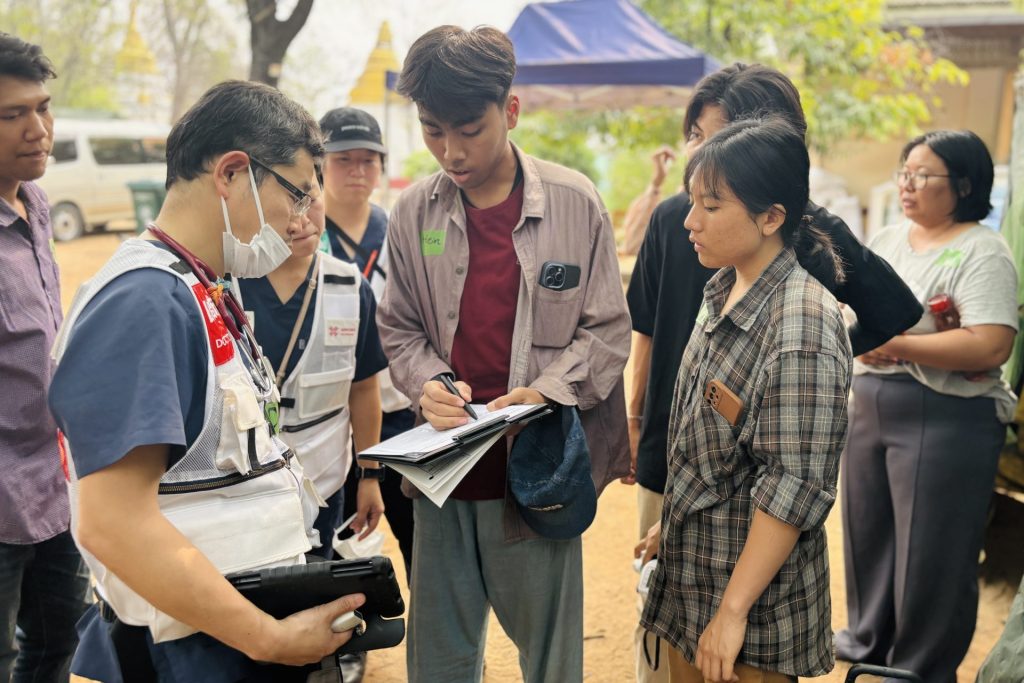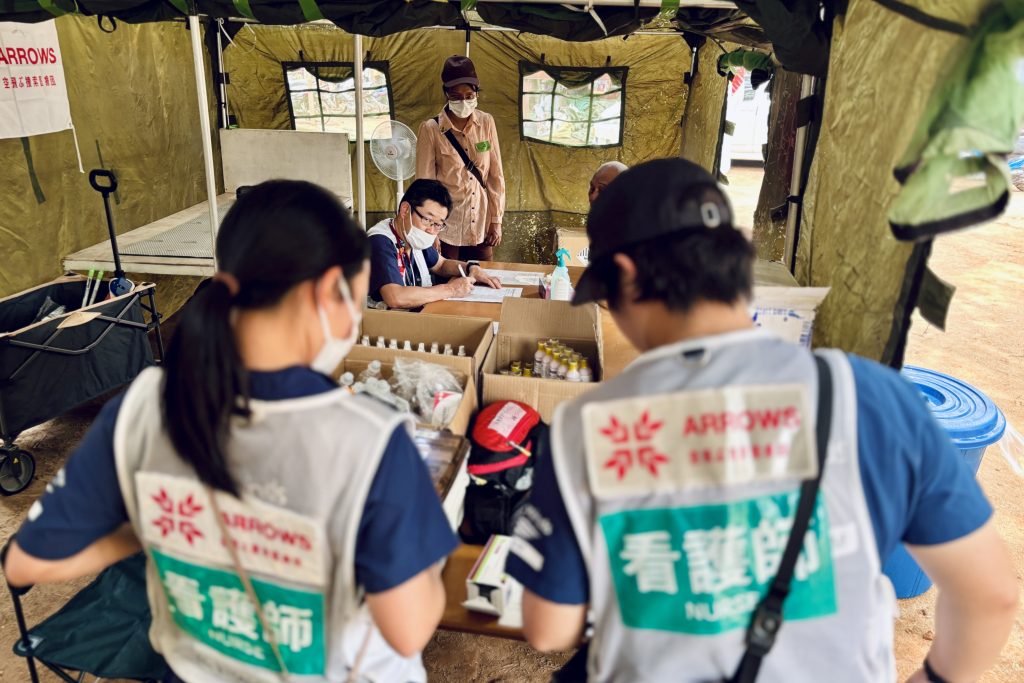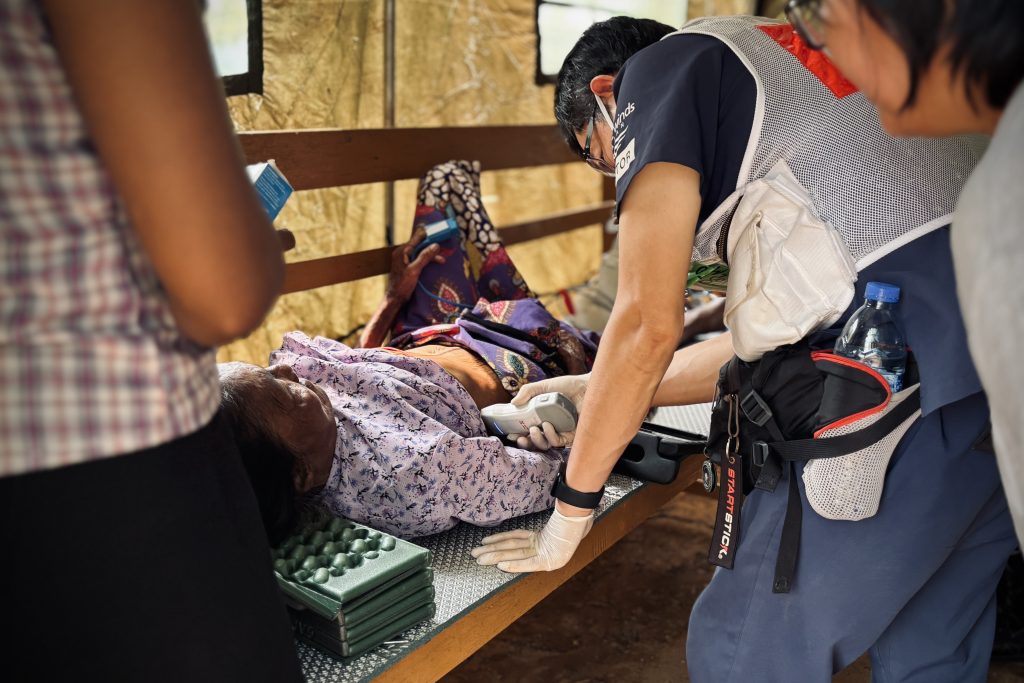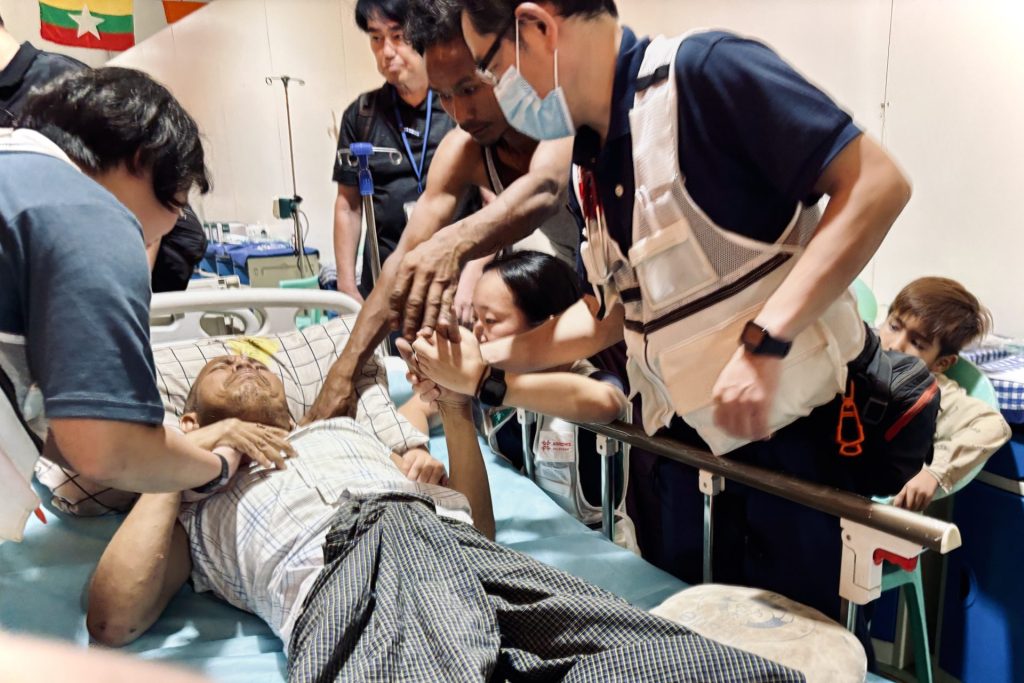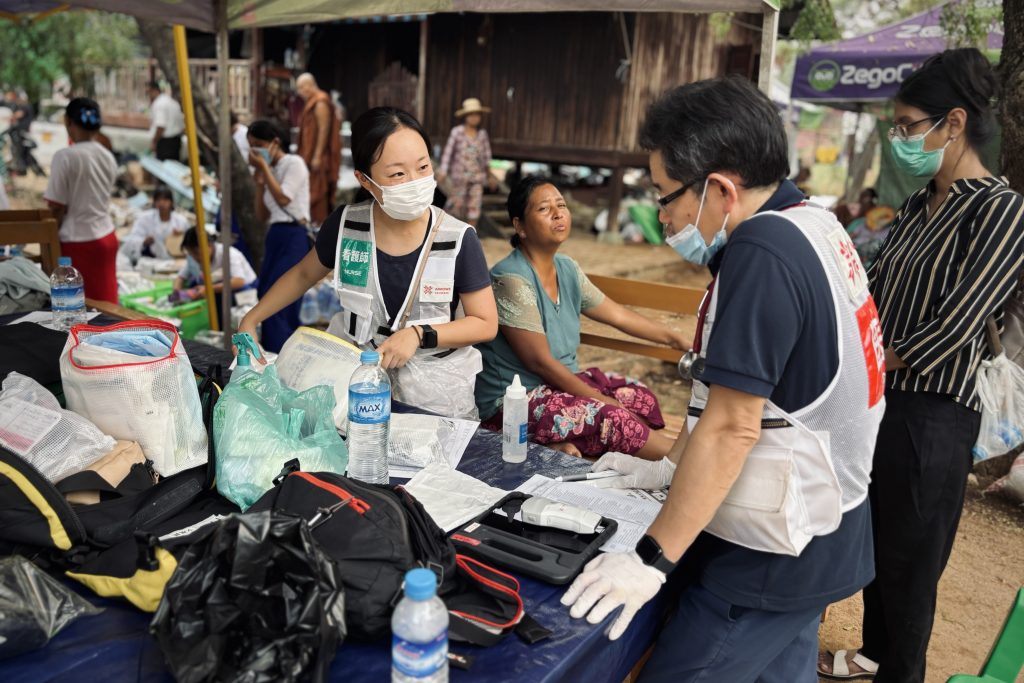Urgent Medical Care for Earthquake Survivors in Myanmar
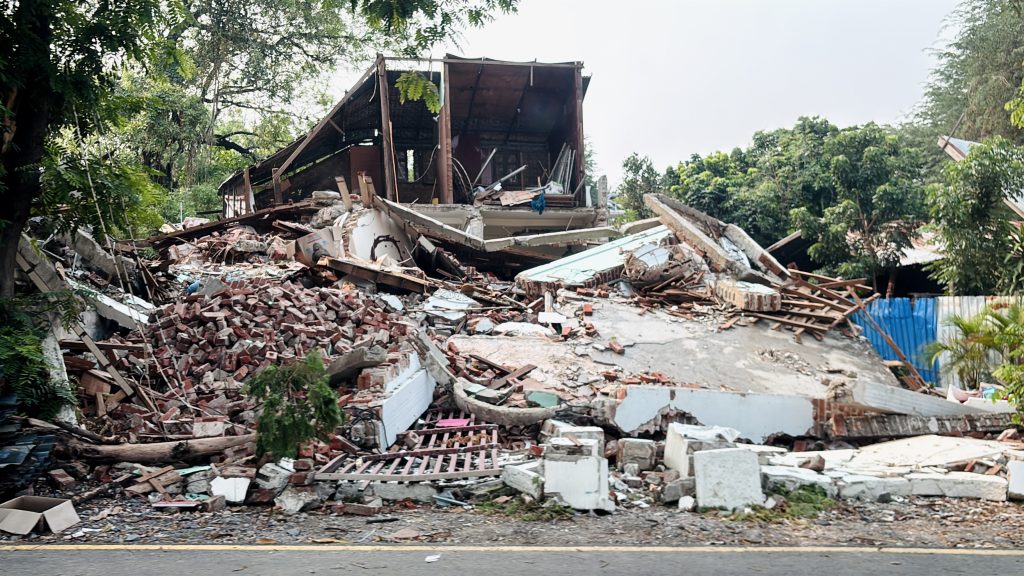
Peace Winds’ ARROWS disaster medical team arrived in the hardest-hit area of Myanmar last weekend to begin relief activities after a devastating 7.7 magnitude earthquake killed thousands. They have been treating survivors at a field clinic in Sagaing, the site of some of the greatest damage and where there is a desperate need for emergency medical care. This is the city where CNN reports residents lamenting that “the smell of the dead bodies has overwhelmed the town.”
“Although more than a week has already passed since the disaster, the atmosphere on the scene is like that of the Noto Peninsula earthquake disaster area [in Japan] on the second day,” said Dr. Mototaka Inaba, the team leader for the Myanmar earthquake. Houses and buildings, including hospitals and fire stations, have been reduced to piles of bricks. Although thousands of people are injured, many are not receiving proper medical treatment. Peace Winds staff found patients sleeping on the ground outside the badly-damaged local hospital for fear that the building would collapse. Others are distrustful of hospitals or wary of seeking help for various reasons.
One man in his fifties was worried that he didn’t have enough money to go to the hospital after his legs were crushed under a collapsed house. He stayed in bed enduring excruciating pain for more than a week. His family finally convinced him that the clinics would not charge him, and he was transported to the ARROWS clinic where Dr. Inaba determined that both legs would need to be amputated in order to save his life. Because facilities in Sagaing do not have the capacity to perform major surgeries, Peace Winds managed to get the patient transported safely to Mandalay for surgery at a field hospital run by an Indian medical team.
Patient with leg injuries receives medical attention and transport to ARROWS clinic
“We are relying on local connections,” Dr. Inaba said, so that the staff can best meet the needs of survivors. That includes staffing the clinic with volunteer medical students, who assist the Peace Winds team. Myanmar is entering its hottest season, with temperatures already exceeding 100°F, making the situation even more difficult for those who have lost their homes. There is a heightened risk of untreated physical and mental health problems for evacuees in situations like this, and many often develop depression or even commit suicide–a phenomenon that is frequent enough in Japan to be categorized as a “disaster-related death.” Dr. Inaba worries that cases of disaster-related death will increase and says that he and his team are doing everything they can to prevent further fatalities.
Even as the medical team is treating patients, Peace Winds logisticians are starting to locally procure and distribute shelter materials and other emergency supplies to those who have lost their homes and possessions.
Peace Winds staff have encountered numerous people who lost everything in this disaster and feel as if there is no hope for the future. They go beyond the boundaries of medicine to care for each individual person, often holding hands or shedding tears together, to provide heartfelt support even when they cannot communicate in words.
Donations to Peace Winds’ work in Myanmar will help us continue to save lives and provide support for long-term recovery. We are grateful for your continued support.
Photos: Peace Winds doctors and nurses treat patients and work with volunteers at ARROWS clinic
Additional Updates from Myanmar
- Myanmar emergency team reflects on hardships of earthquake response (May 7, 2025)
- Distributing emergency supplies for Myanmar earthquake survivors (April 25, 2025)
- Long-term aid needed in Myanmar for survivors who face an uncertain future (April 16, 2025)
- Peace Winds Responds to Deadly Myanmar Earthquake (March 29, 2025)


